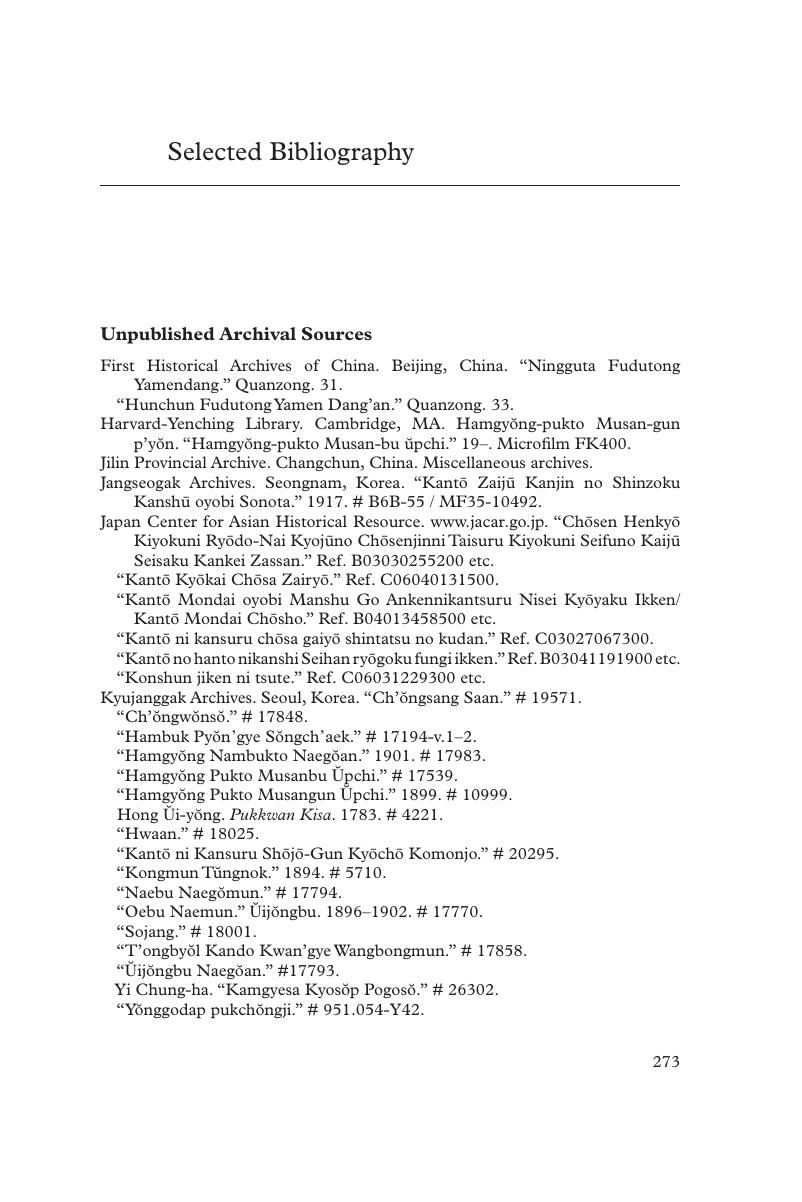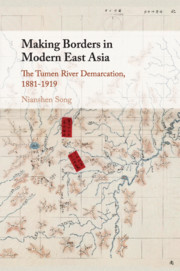Book contents
- Making Borders in Modern East Asia
- Frontispiece
- Making Borders in Modern East Asia
- Copyright page
- Contents
- Figures
- Maps
- Tables
- Acknowledgments
- A Note on Romanization
- Measures
- Abbreviations of Some Sources
- Introduction
- 1 Crossing the Boundary
- 2 Dynastic Geography
- 3 Making “Kando”
- 4 Taming the Frontier
- 5 Boundary Redefined
- 6 People Redefined
- Conclusion
- Epilogue
- Selected Bibliography
- Index
- References
Selected Bibliography
Published online by Cambridge University Press: 26 April 2018
- Making Borders in Modern East Asia
- Frontispiece
- Making Borders in Modern East Asia
- Copyright page
- Contents
- Figures
- Maps
- Tables
- Acknowledgments
- A Note on Romanization
- Measures
- Abbreviations of Some Sources
- Introduction
- 1 Crossing the Boundary
- 2 Dynastic Geography
- 3 Making “Kando”
- 4 Taming the Frontier
- 5 Boundary Redefined
- 6 People Redefined
- Conclusion
- Epilogue
- Selected Bibliography
- Index
- References
Summary

- Type
- Chapter
- Information
- Making Borders in Modern East AsiaThe Tumen River Demarcation, 1881–1919, pp. 273 - 292Publisher: Cambridge University PressPrint publication year: 2018



